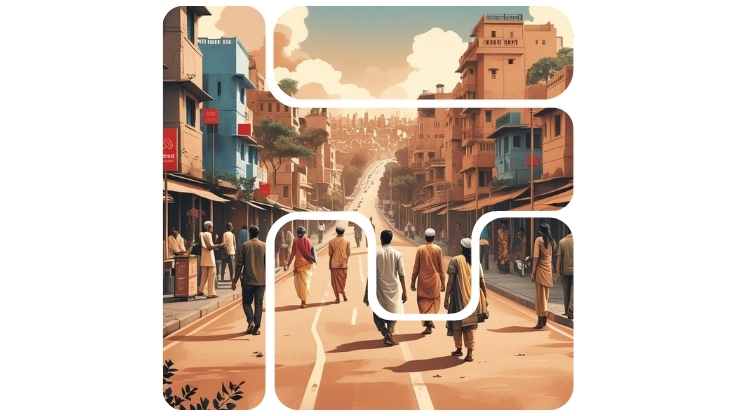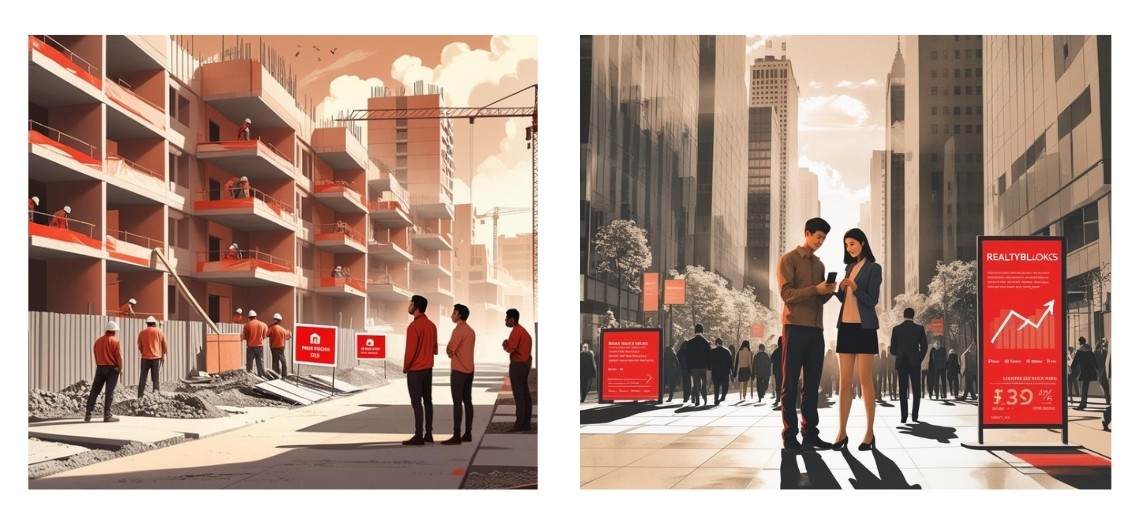Navigating the Future of India's Real Estate Market: A Complex Web of Economic, Social, and Structural Shifts!
India's Real Estate Landscape: The Economic and Affordability Pressures Intensify.
India’s real estate sector, long a staple of the country’s growth story, faces an increasingly complex future. As the macroeconomic environment shifts and affordability constraints tighten, the market is poised for a period of recalibration. The confluence of key factors—including inflationary pressures, rising interest rates, and a deepening affordability crisis—is setting the stage for an unpredictable future.
Recent data highlights that India's real estate market has not been immune to global pressures. Similar to the U.S., the Indian market faces challenges from supply-demand mismatches, regulatory changes, and evolving consumer behaviors. While the world’s second-most populous country enjoys a growing middle class and urban expansion, the affordability ceiling is now being tested. Here’s how these dynamics are shaping the future of Indian real estate.
The Macro Forces Behind India’s Housing Squeeze
India’s housing market has flourished for decades, driven by an expanding urban population and the country's steady economic growth. However, recent macroeconomic shifts are now threatening the stability that underpinned this boom.
-
Rising Interest Rates and Inflation:
India’s central bank, the Reserve Bank of India (RBI), has consistently raised interest rates over the past year to counter inflationary pressures. With inflation forecasted to remain high through 2025, home loan interest rates are expected to remain above 7%, significantly affecting affordability. Much like the U.S. market, high interest rates in India directly suppress the ability of potential homebuyers to enter the market. This has led to a cooling of sales, particularly in high-growth urban areas. -
Unemployment and Economic Deceleration:
India's economy, after rebounding post-pandemic, now faces risks from global slowdowns and domestic inflation. As economic growth slows, unemployment is expected to rise, especially among younger workers who are critical to the housing market’s expansion. The young adult demographic—India’s largest group of potential first-time homebuyers—is increasingly burdened by inflation, job insecurity, and rising student loan repayments, which threatens housing demand. -
The Impact of Affordability Crisis:
A combination of high property prices and rising mortgage rates is pushing the affordability limit. For many, purchasing a home is becoming a distant dream. The typical Indian household, struggling with soaring property taxes and skyrocketing insurance premiums, is finding it harder to manage the costs associated with owning property.
Structural Shifts in Demand and Supply Dynamics
While the broad affordability crisis is evident, there is also an evolving narrative around supply and demand mismatches within the real estate market.
-
Supply Constraints:
While India has ramped up construction activity, the urban housing market is suffering from a mismatch between supply and demand. India’s burgeoning population is increasingly drawn to large urban centers, but the lack of affordable housing in these regions is creating a supply gap. Moreover, high-end developers continue to focus on luxury projects, leaving the demand for affordable housing unmet. -
Regional Disparities and Migration Patterns:
India’s rapid urbanization has led to a steady inflow of people from rural to urban areas. This migration, primarily directed towards metropolitan hubs like Delhi, Mumbai, and Bengaluru, is intensifying the pressure on property prices in these cities. However, unlike developed countries, India’s population growth remains high, and the challenges in migration-induced housing demand may soon exacerbate supply shortages. -
The Impact of the "Affordable Housing" Push:
The Indian government's push to promote affordable housing has been ambitious, but results are mixed. The policies have incentivized builders, but supply has often fallen short of actual demand. The private sector’s reluctance to build affordable homes, coupled with lengthy regulatory processes, continues to impede the sector's growth.
India’s Real Estate Market: The Future Outlook
Given the existing pressures, India’s real estate market faces a pivotal moment. The question is not whether the market will adjust, but how quickly and at what scale. With inflationary pressures, policy shifts, and a growing affordability crisis, a market correction is inevitable.
-
Price Stagnation and Possible Decline:
As in other countries, India’s market is likely to face price stagnation, particularly in urban hubs where speculative price growth has outpaced actual demand. Some Sun Belt-style markets, where speculative buying was high, could see declines of 10-20%, driven by the confluence of supply and demand challenges. -
Growing Bargaining Power for Buyers:
As uncertainty looms, buyers may become more cautious. The speculative "Fear of Missing Out" (FOMO) that fueled bidding wars in the past will be replaced by a more conservative approach. In the coming years, this shift will give buyers greater leverage in price negotiations and push sellers to adjust their expectations. -
Regional Divergence:
India will not experience a uniform market slowdown. Regions such as Mumbai and Delhi NCR are likely to remain resilient, but Tier 2 cities might experience more volatility as developers push for affordability and consumers hold back. -
Social Housing and Government Initiatives:
The government’s continued push for affordable housing, particularly in Tier 2 and 3 cities, remains crucial. The challenge is to streamline processes to ensure that housing policies translate to tangible outcomes. Government schemes like PMAY (Pradhan Mantri Awas Yojana) are expected to mitigate some of the impact by providing subsidies and incentivizing developers.
The Road Ahead: What Needs to Happen
-
More Robust Housing Policies:
The Indian government must implement more transparent and supportive policies that ensure affordable housing supply aligns with actual demand. These include simplifying land acquisition laws, reducing the regulatory burden on developers, and ensuring that affordable housing projects have faster approval timelines. -
Innovative Financing Solutions:
As affordability becomes a major barrier to homeownership, introducing more flexible financing options such as long-term mortgages and subsidized interest rates could help bridge the gap. Additionally, public-private partnerships in affordable housing should be scaled. -
Focus on Sustainable Development:
With the rise of smart cities and sustainable infrastructure, India’s real estate sector must shift towards developing eco-friendly, energy-efficient homes that align with global trends. These properties will cater to a more conscious, sustainability-driven consumer and will fetch better long-term value.
Conclusion: India’s Housing Market Enters a New Era
India’s real estate market stands at a crossroads, with several converging forces—macroeconomic shifts, structural demand changes, and affordability concerns—creating both challenges and opportunities. While the near-term outlook may seem cautious, the evolving market will present new avenues for investors, developers, and policymakers to innovate and create lasting solutions.
As the market faces inevitable corrections and adjustments, India’s path to sustained real estate growth will depend on addressing the core issues of affordability, urban planning, and long-term economic stability. The coming years will determine whether India can emerge from these pressures with a more resilient, equitable housing landscape. With the right mix of policy intervention, smart infrastructure, and sustainable development, India's housing market could once again position itself for a new era of growth.
RealtyBlocks remains at the forefront, actively integrating AI-driven solutions and innovative real estate models that enable both buyers and sellers to navigate this complex environment. As we build towards the future, we invite you to be part of this transformative journey. Join us at RealtyBlocks to explore smarter ways to engage with India's dynamic real estate sector. #RealEstateIndia #MarketTrends #HousingCrisis #EconomicGrowth #SmartInvesting #Sustainability